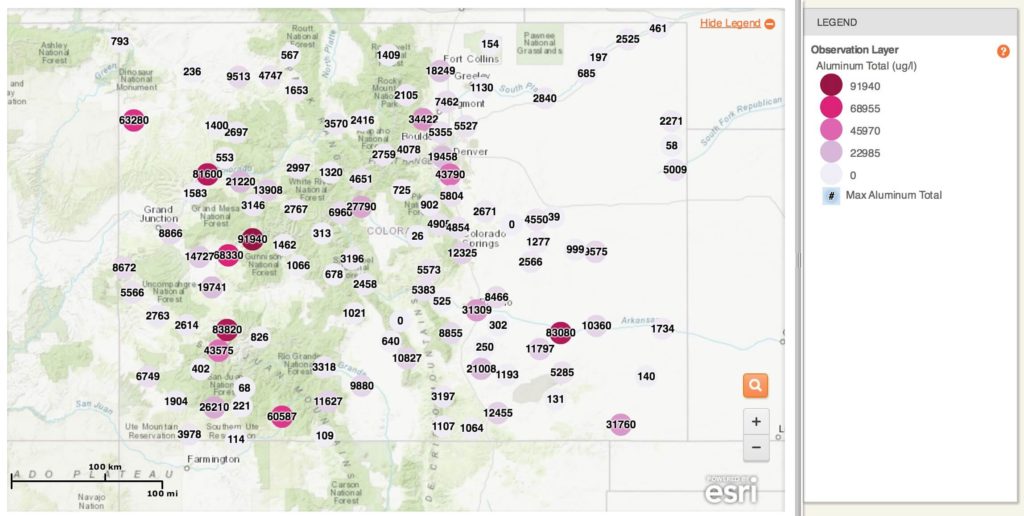Heavy Metals in Waterways

About this Inquiry
This inquiry focuses on heavy metals in waterways in Colorado. Heavy metals can sometimes end up in waterways due to mining activity, industrial agriculture operations, urban runoff, and from other sources. High levels of certain heavy metals can be toxic for aquatic life, as well as other animals (including humans) that may interact or drink from that water source. Students will learn about heavy metals and data collected about them from citizen scientists, and then analyze the data in tables and maps to identify possible evidence of what may be causing potentially dangerous “hot spots” in Colorado rivers and streams.
Instructional Days
2 days
Learning Goals
- Analyze and interpret data to determine patterns and relationships of heavy metal toxicity in Colorado waterways and consider the limitations of this analysis.
- Use evidence in data and maps to construct or support an explanation about the source of heavy metal pollution in Colorado waterways.

Type of Analysis
- Mapping – Symbology
- Mapping – Spatial Analysis
About this Citizen Science Project:
River Watch of Colorado is a statewide volunteer water quality monitoring program operated by Colorado Parks and Wildlife (CPW). Their mission is to work with volunteer stewards to monitor water quality and other indicators of watershed health and utilize this high-quality data to educate citizens and inform decision makers about the condition of Colorado’s waters. This program is unique in its statewide focus and frequency of data collection.